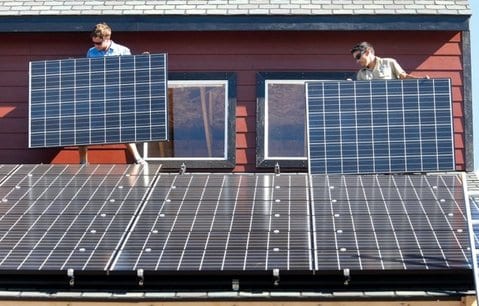(Update: QCA has admitted it erred in its calculations and says it will revise the tariff upwards!).
The Queensland Competition Authority has announced a further cut in the feed in tariff for exports back into the grid from rooftop solar arrays, but the solar industry is questioning whether the cut is justified.

QCA chairman Malcolm Roberts, in one of his last acts as head of the QCA before taking up his new role heading the country’s biggest oil and gas lobby group, the Australian Petroloum Production Exploration Association, announced that the FiT for solar customers in regional areas of the state covered by the Ergon network would be cut from 6.53c/kWh, to 6.03c/kWh.
Roberts justified the cut on the basis that energy losses from networks had been reduced.
“The main reason for the lower rate is that the Australian Energy Market Operator has updated its estimates for transmission and distribution losses,” Roberts said in a statement. “Lower energy losses reduce the value of energy exported from solar panels.”
Analysts agreed that, in principle, it is true that lower energy losses due reduce the value of energy exported from solar panels. But there are questions over why the lower energy losses – which were not itemised – justified a near 10 per cent cut in the solar tariff.
AEMO estimates that total energy losses – the electricity lost between the point of generation to the point of deliver – can amount to around 10 per cent.
Ironically, it is the emergence of rooftop solar and other distributed generation, which generates electricity at the point of consumption, that has helped reduce those losses.
But the problem with the QCA decision is that AEMO is yet to release its updated estimates on energy losses. It won’t do that until later this month.
A spokesperson for QCA pointed RenewEconomy to estimates provided by ACIL Allen on energy losses. Both this, and last year’s AEMO estimate, suggests small gains in some part of Ergon’s network (of no more than 1 per cent), and increased energy losses at some nodes.
RenewEconomy asked QCA for further information on how the data justified the decision announced late on Friday. It did not receive a response by the time of publication.
The size of solar tariffs in Queensland and in other states have been hotly contested. The QCA says its methodology ensures “a fair return for the energy they export to the grid without imposing unjustifiable costs on the customers buying that energy. We calculate the true market value of the energy.”
It says that when retailers buy energy from customers with solar panels, they avoid some of their normal business costs, but retailers still incur most of their normal business costs, including retail operating costs and transmission and distribution charges.
The solar industry says this is not quite true, and some losses are involved. And the FiT does not take into account benefits of solar systems, such as reduced energy losses, grid resilience and reduced emissions.
John Grimes, the Chief Executive of the Australian Solar Council, described the QCA as a “relic of the dark past of the Campbell Newman era”, and described the decision as “old thinking” on the value of solar.
“The price cut punishes solar families outside of southeast Queensland and fattens the profits of the big power companies and the fossil fuels industry,” Grimes said in a statement,
“The Palaszczuk Government promised Queensland families a fair price for solar. The Australian Solar Council supports that commitment. The Queensland Government must move quickly with its inquiry into a fair price for solar and ensure a swift conclusion to get a fair export price for all Queensland families.”










